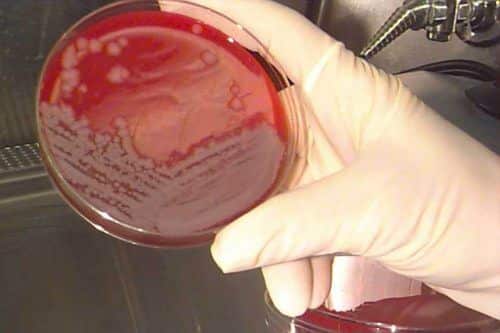The observation of the bacteria was done with a combination of standard light microscopy and fluorescent microscopy which enabled accurate XNUMXD mapping of the bacteria. This method is good for enabling XNUMXD tracking of dense bacteria that cannot be tracked using conventional methods

Bacterial colonies spread rapidly across surfaces by swimming together. The collective movement of bacteria resembles the movement of fish, birds and other organisms that move in flocks. Therefore, it is of great importance from a physical, biological and ecological point of view.
Until now, the studies done on the collective movement of bacteria have focused on thin colonies, where there is a small number of bacterial layers, and this is due to technical constraints related to the difficulty of observing a thick colony. In such cases, if antibiotics are added to the food, the colony is immediately destroyed.
In a new study by Dr. Avraham Baer from the Water Institute, the Desert Research Institutes, and the Department of Physics at Ben-Gurion University of the Negev, in collaboration with Prof. Gil Ariel from the Department of Mathematics at Bar-Ilan University together with Prof. Rasika Harshi from the Department of Microbiology at the University of Texas at Austin, three colonies were studied -Dimensionality with an emphasis on the three-dimensional structure that changes as a function of time. The observation of the bacteria was done with a combination of standard light microscopy and fluorescent microscopy which enabled accurate XNUMXD mapping of the bacteria. This method is good for enabling XNUMXD tracking of dense bacteria that cannot be tracked using conventional methods.
The results of the study showed that the colony has a unique structure in which most of the bacteria inhabit the intermediate layers of the colony, some the bottom and they do not inhabit the upper part which contains mostly liquids. In addition, it was discovered that adding antibiotics to the colony's food creates an absent layer of bacteria at the bottom of the colony and all are pushed into the middle part, but still do not inhabit the upper part.
"The absence of bacteria in the upper part of the colony," explains Prof. Ariel, "is a result of the presence of surfactants called surfactants. The bacteria swimming near the edge of the colony create currents in the liquid and move the surfactants. These changes create a postponement".
"The disappearance of the bacteria from the lower part of the colony," continues Dr. Baer, "is done through a chemotactic rejection process, based on biochemical sensors found in the bacteria, whose existence was unknown until now and has now become a focus of interest in biochemical research. Amazingly, the process of the bacteria escaping from the lower part of the colony due to the antibiotics prevents them from dying and therefore the chemotactic rejection process serves as a means of survival for the bacteria."
